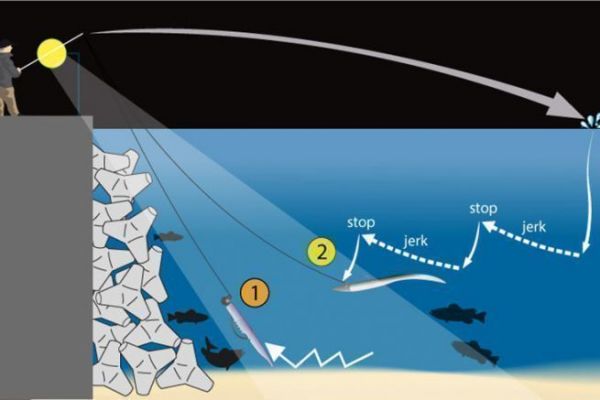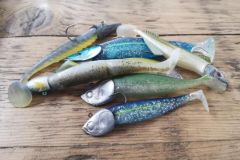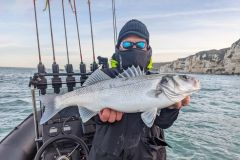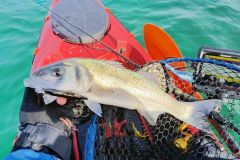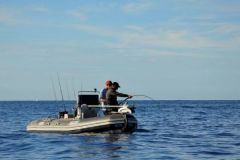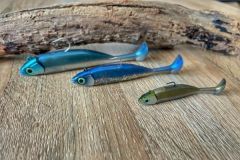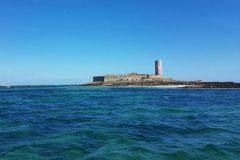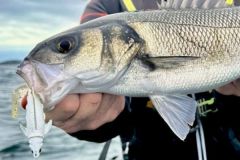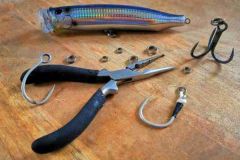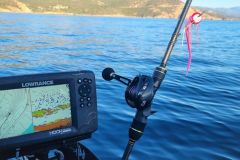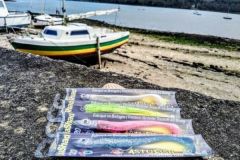Initially, this ultra-light fishing technique involves searching for small rock fish using ultra-light tackle. Among them, the red scorpion fish, Scorpaena scrofa the rockfish is the emblematic species in Japan that gave its name to the rockfishing technique. Often decided at the last minute in pairs or with a group of friends, this type of fishing guarantees good times of relaxation, while keeping in mind the game of the score: who will catch the most fish, or the biggest? What's more, this approach allows you to catch virtually any species in harbour areas, including sea bass.
Big bass on the prowl in port areas
And as a bonus, in these protected harbor areas, a big bass can always surprise us... Rockfishing has thus become the ultralight fishing of sea anglers, in port areas as well as in the rocks of the foreshore.
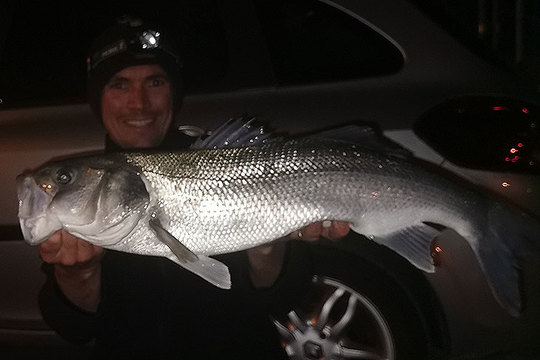
This type of fishing is generally done at night. This is when sea bass come to the surface to feed on shrimps and crabs near the seaweed. Look out for water movements and small current veins, which are often favourable for detecting the presence of sea bass. Harbour lights are also "hot spots" for spotting labrax.
Fishing for a big bass during the day is not impossible, but it is much more difficult as bass are more wary of footsteps and line diameters, for example.
The majority of lures used do not exceed 8 cm (3 inches) and lead heads generally do not exceed 7 grams. Rockfishing is also practised with micro-jigs and small swimming fish.
Night-time entertainment
The soft lure can be used in two ways.
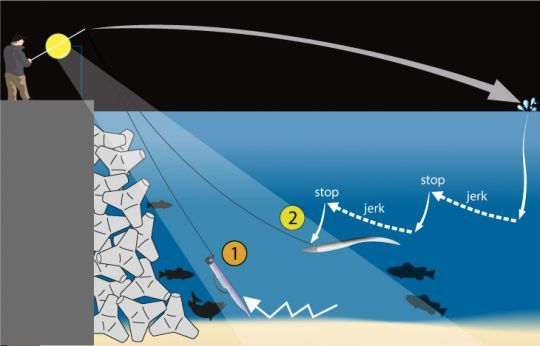
- Handled in a sawtooth pattern close to the bottom, for example with a Texan soft lure, lightly weighted.
- Jerking, with jerks and pauses between two waters.
Here's a top view.
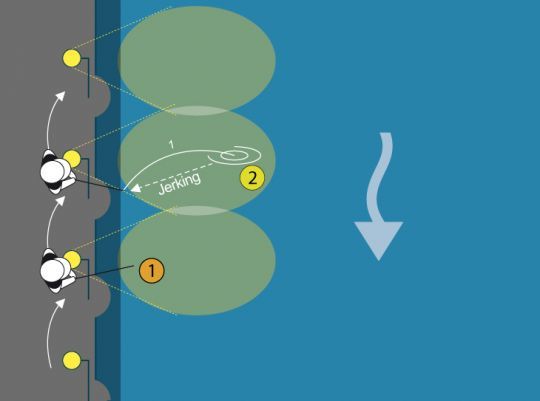
- Start under overhead lighting or just behind rocks.
- Then try casting through the shadows and into the light. When jerking, similar to fly fishing from a boat, it's interesting to cast into the light and work your way into the shadows. You can also try a slow linear retrieve below the surface, a technique that can be surprising.
Rockfishing equipment
A 1.80 m rod may be sufficient for fishing from a quay, while a 2.20 m is useful for handling lures from large rocks. The reel is light, size 1,000 to 2,500 according to manufacturers' standards. Its drag is never too tight, in the event of a violent, powerful strike.
After the braid, 2 m of 0.18 to 0.25 mm fluorocarbon is placed.
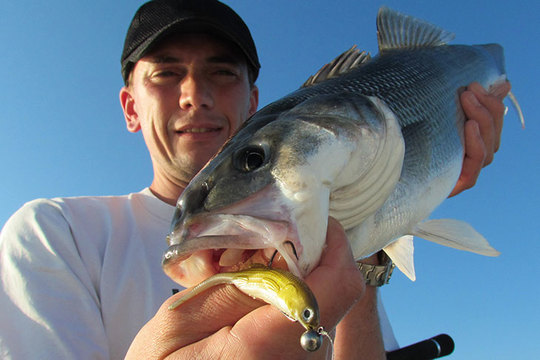
Cannes
- Length (m/foot): 1.8 to 2.20 m/6 to 7'3 feet
- Weight: Throw 0.4 to 7 grams
- Line: 2 to 8 lb
- Power: UL, L
- Action: Reg-fast, fast
Reels
- Type : Spinning
- Size/weight: 1,000 to 2,500 / 200 to 250 grams
- Ratio/average recovery: 4.5:1 to 5.5:1/60 to 85 cm
- Minimum capacity: 80 m
Bottom line
- Braided 0.04 to 0.10 mm
- Fluorocarbon: 2 m diameter 0.18 to 0.25 mm
